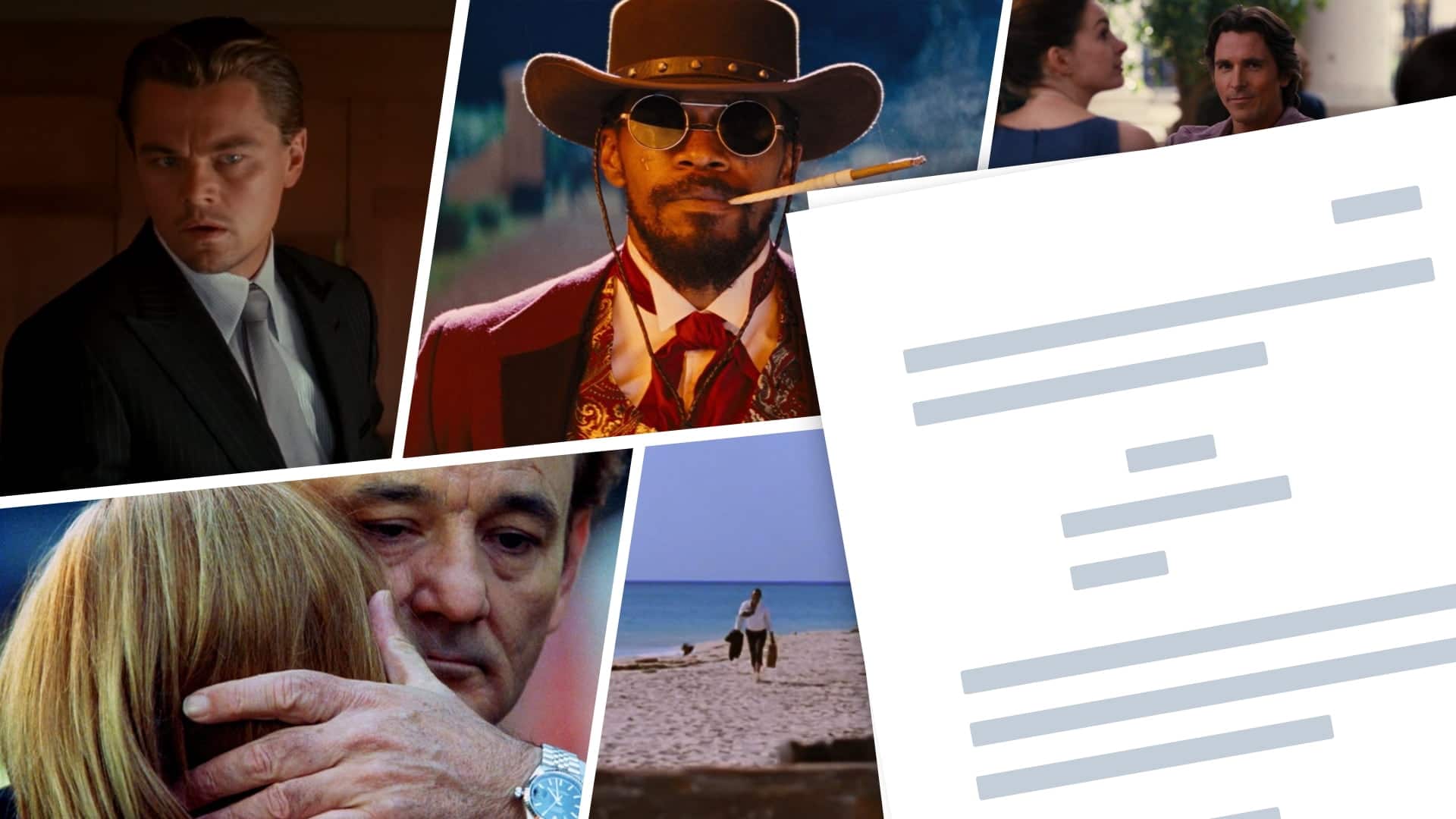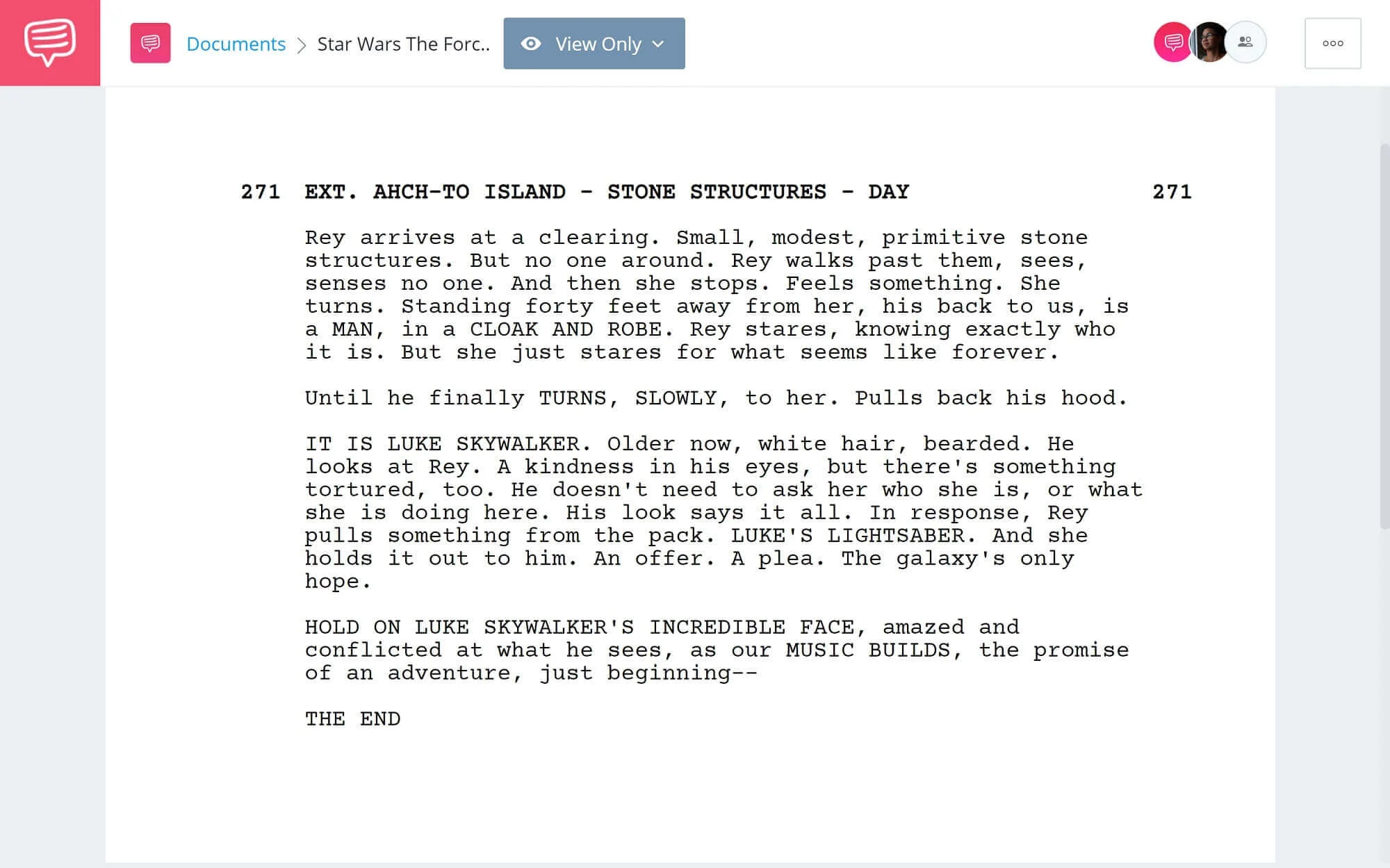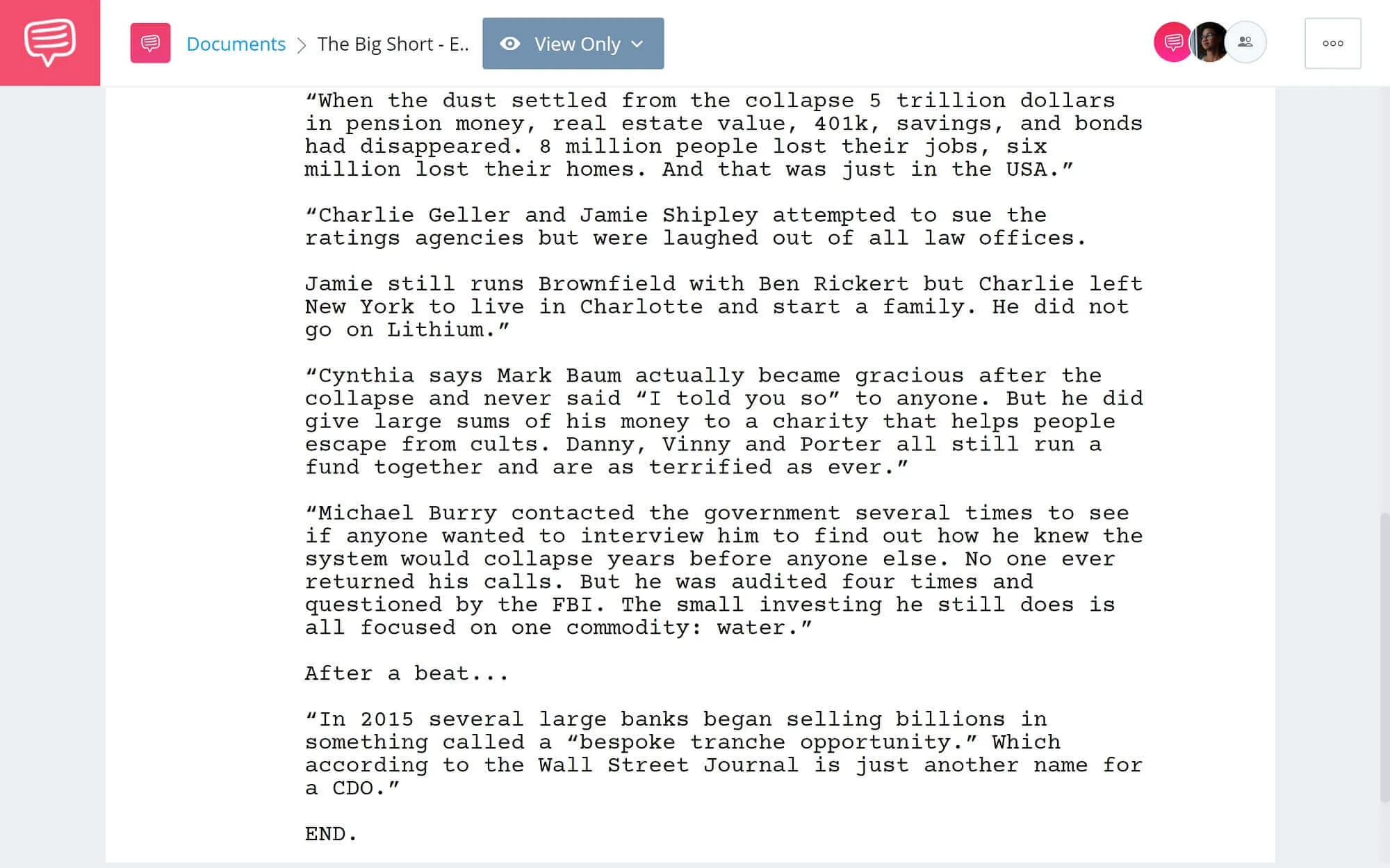The ending of a screenplay is often more important than the 90 pages that preceded it. Due to the magnitude of its importance, many writers struggle to conclude their scripts with proper resolution. Don’t worry though, we’re going to show you everything you need to know about how to end a screenplay, with basic script format examples from Star Wars: The Force Awakens and The Big Short. We’re going to cover the technical aspects of writing THE END into scripts. By the end, you’ll have a strong grasp on the formatting requirements of how to end a screenplay.
Watch: 4 Ways to End a Movie — Sweet Ending
Technical Examples
Screenplay endings explained
Before we analyze the storytelling aspects of some screenplay endings, let’s break down how they’re done in a technical sense. Going through the process of properly formatting a screenplay can be a headache, but here are some tried and true tips on how to end a screenplay.
We imported the Star Wars: The Force Awakens screenplay into StudioBinder’s screenwriting software to see how one of the biggest scripts in recent memory ended. Make a note of the last line of the script!
How to End a Screenplay • Read Star Wars: The Force Awakens Ending
Related Posts
The ending to The Force Awakens script is rather straightforward. Writers Lawrence Kasdan, J.J. Abrams, and Michael Arndt didn’t write in any fades or superimpositions, they simply just wrote THE END. Oftentimes, THE END is all you need to conclude your script.
For some stories, more information is required in the credits. Take The Big Short, for example — the script gives us “the fallout information” in superimposed text. Let’s take a look at how it looks in the script — follow the image link to read the entire ending.
How to End a Screenplay • Read the Big Short Ending
In a technical sense, there’s a lot more going on here than there was in The Force Awakens. First, we go to black, “then over black…” we get superimposed text.
If you’re adapting a true story and need to relay “the fallout information,” then superimposed text is always a good option. We’ve seen it done countless times, like in the Goodfellas script. After the text, the script gives us a simple END, rather than THE END — both achieve the same purpose.
If you’re in a classic mood and/or French, you can always write in FIN, just be mindful that it may ruffle a few readers' feathers as some regard it as cliche.
Here is a list of some other popular chyrons and transitions you can use at the end of scripts:
How to End a Film Script
- FADE TO BLACK
- FADE TO WHITE
- DISSOLVE TO BLACK
- DISSOLVE TO WHITE
- SUPERIMPOSE
- END
- THE END
- FIN
Related Posts
Creative Examples
How to end your screenplay
The ending to a script can make or break the whole story. Think about it: how many times have you watched something with a terrible ending? Game of Thrones, Dexter, I’m looking at you. A bad ending can turn a great story into something that you remember with a sour taste. As such, it’s important that we study how to end a movie script.
It’s not a perfect science, but there are a few strategies that will help your story end in a firework fashion. Before we dive into some examples, let’s watch an excellent video essay that explores how to end a script:
How to End a Screenplay
Perhaps it’s trite to say, but a story will only go so far as its characters bring us. Without characters we empathize with, a story lacks purpose and resonance — ultimately it means nothing.
Keep this point in mind as you’re thinking about your ending. If the protagonist of your story is someone we root for, we’ll be emotionally connected to their fate, and the ending as a whole.
Here are some do’s and don'ts for writing protagonists:
Screenplay Rules
- DO empower your protagonist to make decisions
- DON’T make your protagonist too powerful
- DO give your protagonist character flaws
- DON’T have them overplay their hand
- DO give context to their actions
- DON’T let them always win
By following these screenplay rules, you’ll have a good chance at constructing a protagonist we can relate to.
Characters are just one part of how to end a film script though. Context is what keeps us in the moment, anticipating how things will “all come together.” The three-act structure refers to this part of the story as “the resolution.”
Resolution comes in many forms; from overstatement to ambiguity. Not every story has to be tied together with a bow on top. Take the Inception ending for example:
How to End Your Screenplay • Inception Ending Explained
The “question” of the spinning top at the end of Inception plays directly into a central theme of the story; how we determine what reality is. Since Inception is filled with mystery, a mysterious ending makes sense within the context of the narrative. Ultimately, director Christopher Nolan shows us how to end a movie script with his signature touch.
Other films rely on poetic clarity to give the audience a sense of resolution. Perhaps no ending is a better example of this than Monty Python’s The Life of Brian’s.
How to End a Script • Always Look on the Bright Side of Life
The ending of The Life of Brian is full of subtext, but the resolution is still remarkably clear: the protagonist is literally crucified. Even without Eric Idle’s iconic singing, the ending of The Life of Brian would still have worked as a perfect example of resolute satire in film.
Related Posts
UP NEXT
Complete Guide to Script Formatting
The ending of a script is just a small part in the greater structure of a story. There are tons of different intricacies involved in screenplay format, but don’t worry, we go over everything you need to know in this next post. By the end, you’ll be ready to structure your own screenplay in the industry standard script format!



What about Post-credits, mid-credits, and other stuff like that?